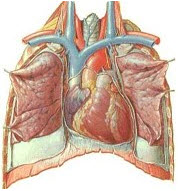Glass, in one form or another, has long been in noble service to humans. As one of the most widely used of manufactured materials, and certainly the most versatile, it can be as imposing as a telescope mirror the width of a tennis court or as small and simple as a marble rolling across dirt.
41. ______
The uses of this adaptable material have been broadened dramatically by new technologies: glass fiber optics—more than eight million miles—carrying telephone and television signals across nations; glass ceramics serving as the nose cones of missiles and as crowns for teeth; tiny glass beads taking radiation doses inside the body to specific organs; even a new type of glass fashioned of nuclear waste in order to dispose of that unwanted material.
42. ______
On the horizon are optical computers. These could store programs and process information by means of light—pulses from tiny lasers—rather than electrons. And the pulses would travel over glass fibers, not copper wire. These machines could function hundreds of times faster than today’s electronic computers and hold vastly more information. Today fiber optics are used to obtain a clearer image of smaller and smaller objects than ever before—even bacterial viruses. Anew generation of optical instruments is emerging that can provide detailed imaging of the inner workings of cells. It is the surge in fiber optic use and in liquid crystal displays that has set the U. S. glass industry (a 16 billion dollar business employing some 150, 000 workers) to building new plants to meet demand.
43. ______
But not all the glass technology that touches our lives is ultra-modem. Consider the simple light bulb; at the turn of the century most light bulbs were hand blown, and the cost of one was equivalent to half a day’s pay for the average worker. In effect, the invention of the ribbon machine by Coming in the 1920s lighted a nation. The price of a bulb plunged. Small wonder that the machine has been called one of the great mechanical achievements of all time. Yet it is very simple: a narrow ribbon of molten glass travels over a moving belt of steel in which there are holes. The glass sags through the holes and into waiting moulds. Puffs of compressed air then shape the glass. In this way, the envelope of a light bulb is made by a single machine at the rate of 66,000 an hour, as compared with 1,200 a day produced by a team of four glassblowers.
44. ______
The secret of the versatility of glass lies in its interior structure. Although it is rigid, and thus like a solid, the atoms are arranged in a random disordered fashion, characteristic of a liquid. In the melting process, the atoms in the raw materials are disturbed from their normal position in the molecular structure; before they can find their way back to crystalline arrangements the glass cools. This looseness in molecular structure gives the material what engineers call tremendous "formability" which allows technicians to tailor glass to whatever they need.
45. ______
Today, scientists continue to experiment with new glass mixtures and building designers test their imaginations with applications of special types of glass. A London architect, Mike Davies, sees even more dramatic buildings using molecular chemistry. "Glass is the great building material of the future, the ’dynamic skin’," he said." Think of glass that has been treated to react to electric currents going through it, glass that will change from clear to opaque at the push of a button, that gives you instant curtains."
Think of how the tall buildings in New York could perform a symphony of colours as the glass in them is made to change colours instantly. Glass as instant curtains is available now, but the cost is exorbitant. As for the glass changing colours instantly, that may come true. Mike Davies’s vision may indeed be on the way to fulfillment.
[A] What makes glass so adaptable
[B] Architectural experiments with glass
[C] Glass art galleries flourish
[D] Exciting innovations in fiber optics
[E] A former glass technology
[F] New uses of glass

